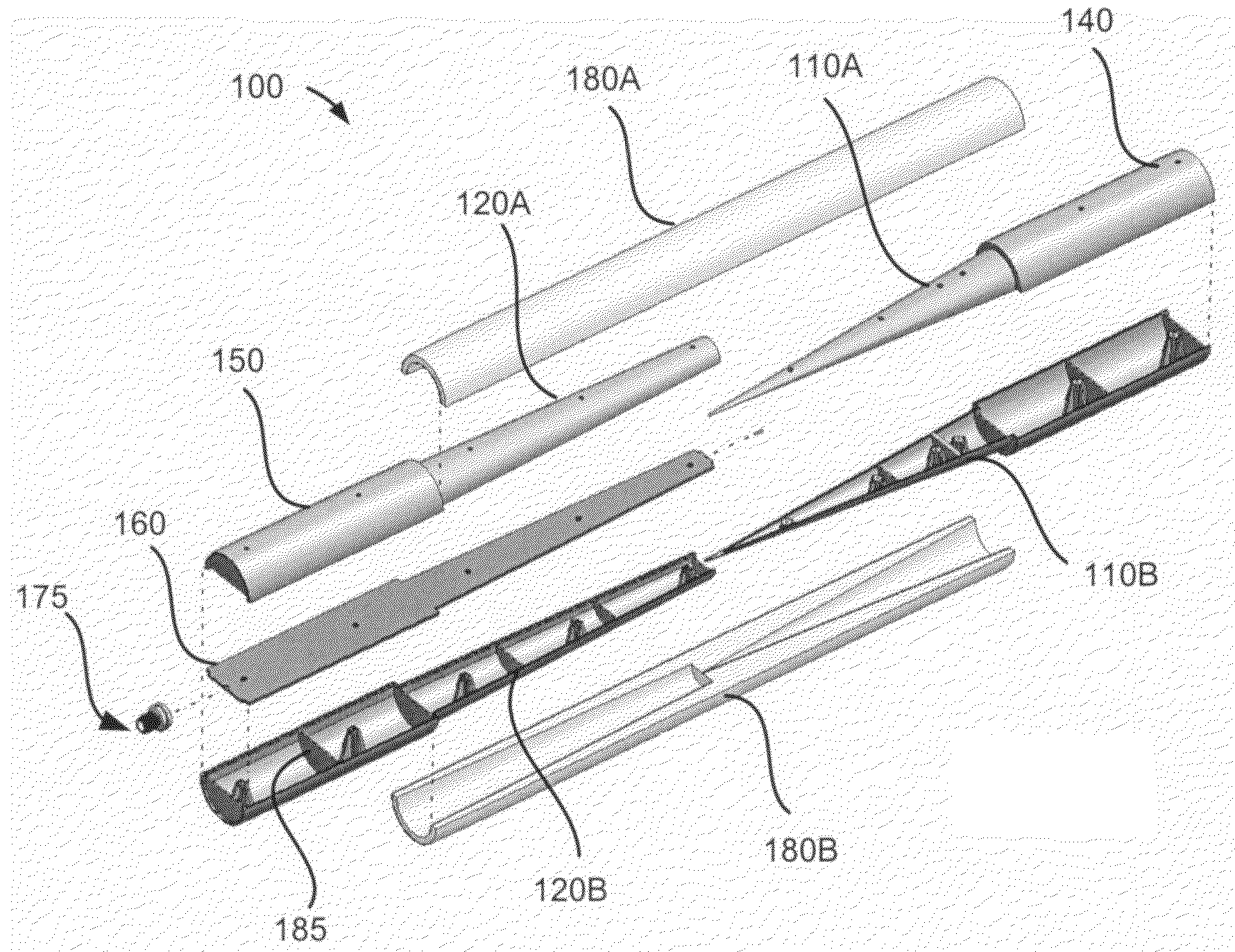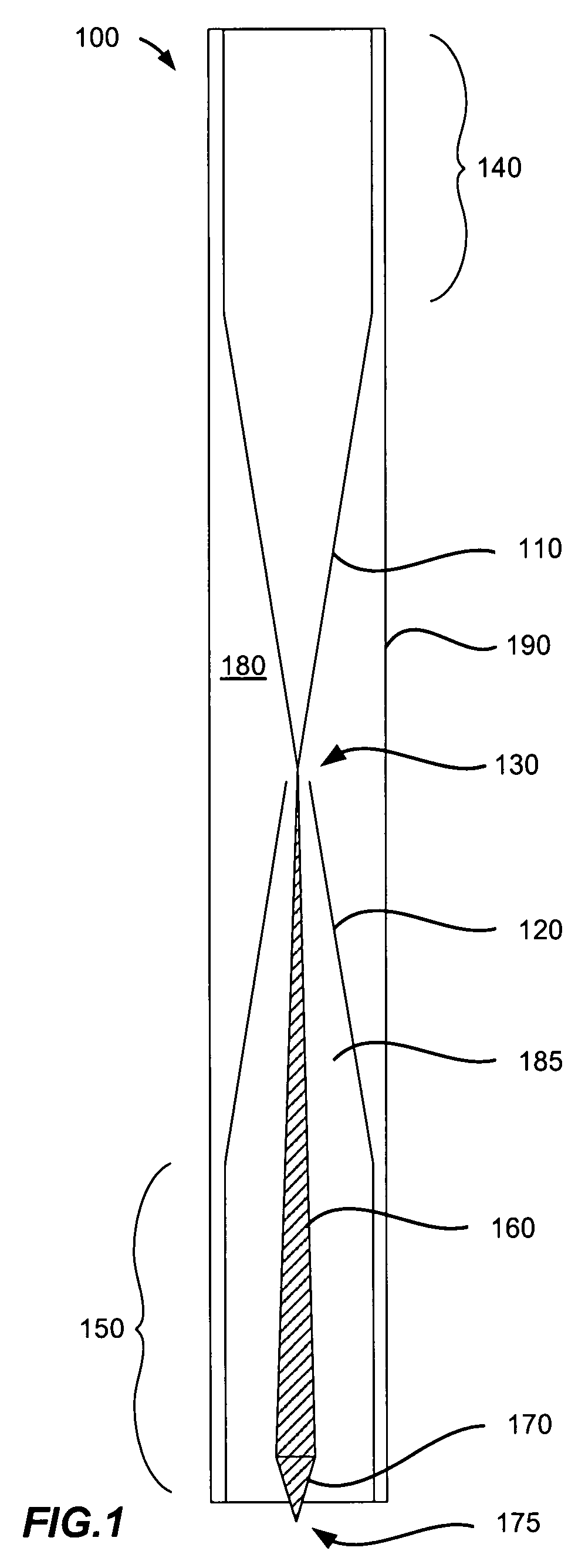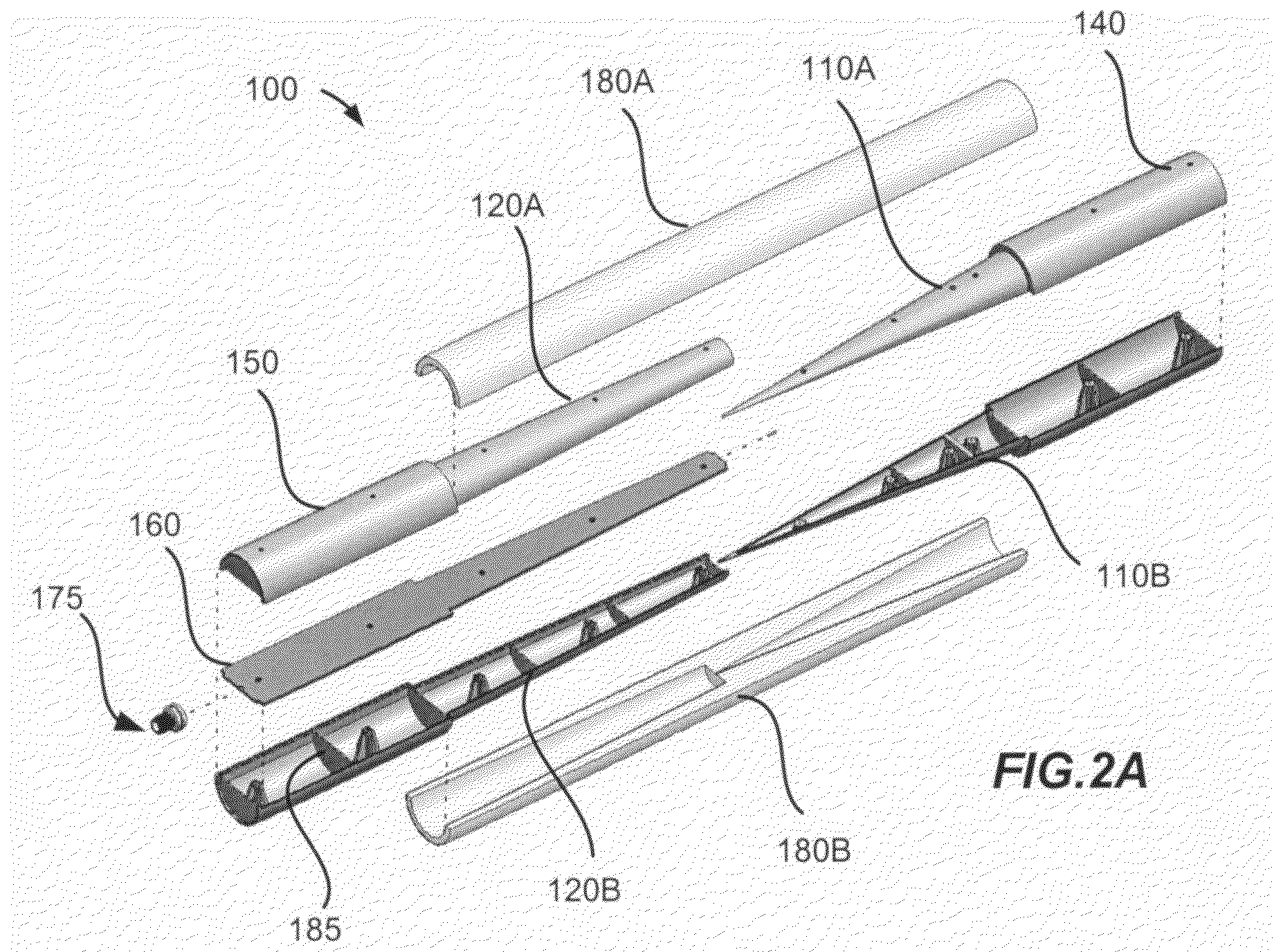High impedance bicone antenna
a bicone antenna, high impedance technology, applied in the direction of antennas, antenna details, antenna feed intermediates, etc., can solve the problems of increasing the impedance of the antenna, and the impedance mismatch between the feed line, so as to increase the aperture length, increase the cone diameter, and increase the length
- Summary
- Abstract
- Description
- Claims
- Application Information
AI Technical Summary
Benefits of technology
Problems solved by technology
Method used
Image
Examples
Embodiment Construction
[0020]The present invention supports the design and operation of a bicone antenna having a reduced aperture size achieved by reducing the cone angle. This reduction in cone angle can increase the impedance of the cones thus providing a high impedance bicone antenna system. In recognition of this high impedance characteristic, an inventive impedance matching mechanism can be used to interface with the bicone antenna system. An exemplary impedance matching mechanism is implemented by a flat conductive taper disposed within a cone of the bicone antenna system. This flat conductive taper functions as an impedance matching transmission line between the external feed line to the antenna and the feed point at the vertex of the cones. The single conductive taper, useful for impedance matching, can function as the center conductor of a coaxial feed mechanism. The inside of the bottom cone can serve as the outside conductor (or shielding conductor, or return) of the tapered feed line.
[0021]Th...
PUM
 Login to View More
Login to View More Abstract
Description
Claims
Application Information
 Login to View More
Login to View More - R&D
- Intellectual Property
- Life Sciences
- Materials
- Tech Scout
- Unparalleled Data Quality
- Higher Quality Content
- 60% Fewer Hallucinations
Browse by: Latest US Patents, China's latest patents, Technical Efficacy Thesaurus, Application Domain, Technology Topic, Popular Technical Reports.
© 2025 PatSnap. All rights reserved.Legal|Privacy policy|Modern Slavery Act Transparency Statement|Sitemap|About US| Contact US: help@patsnap.com



